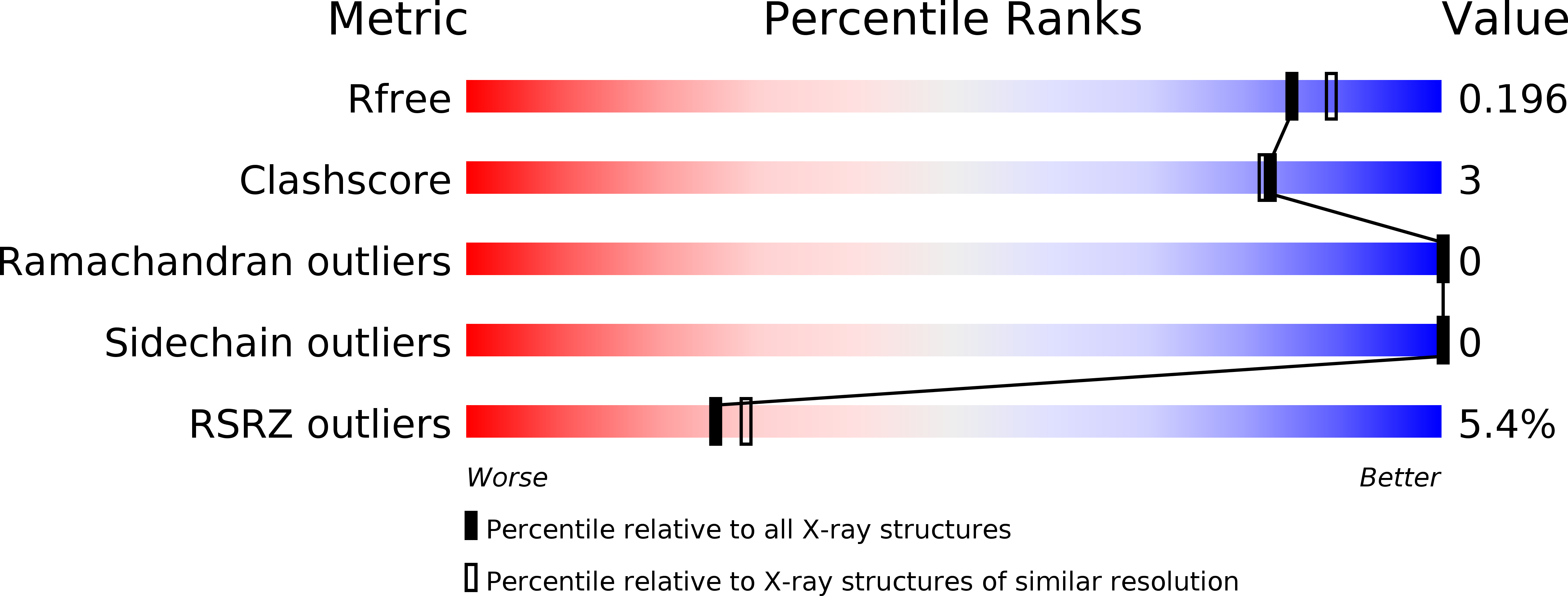
Deposition Date
2017-09-02
Release Date
2017-12-20
Last Version Date
2023-10-04
Entry Detail
PDB ID:
6AVJ
Keywords:
Title:
Crystal structure of human Mitochondrial inner NEET protein (MiNT)/CISD3
Biological Source:
Source Organism:
Homo sapiens (Taxon ID: 9606)
Host Organism:
Method Details:
Experimental Method:
Resolution:
1.90 Å
R-Value Free:
0.19
R-Value Work:
0.16
R-Value Observed:
0.17
Space Group:
C 1 2 1


